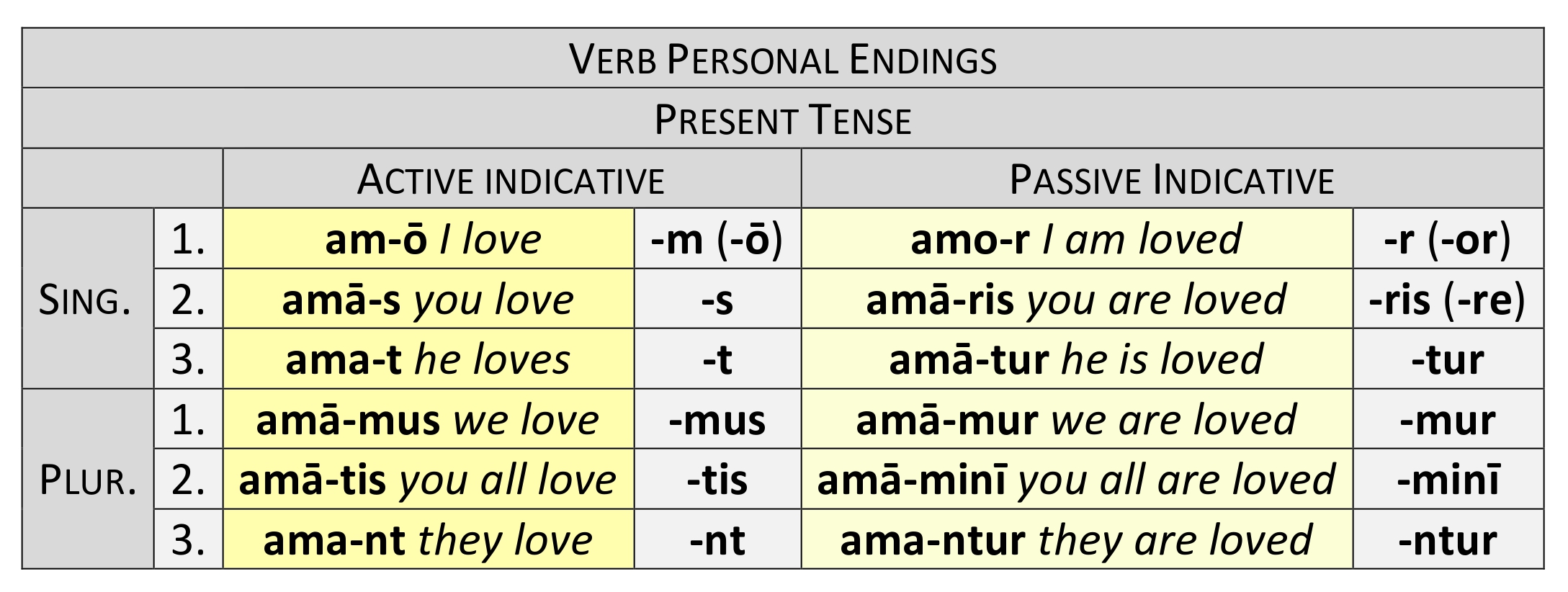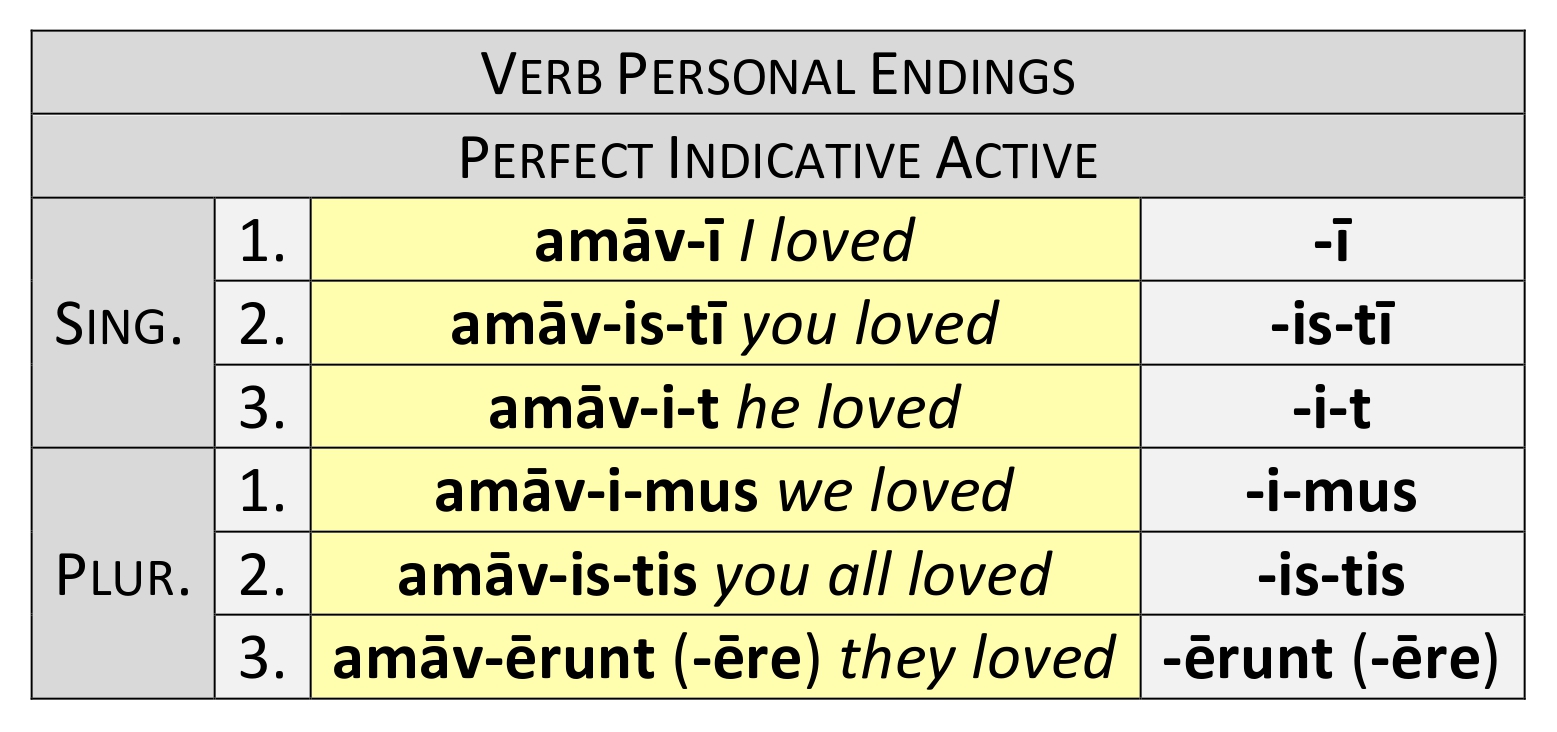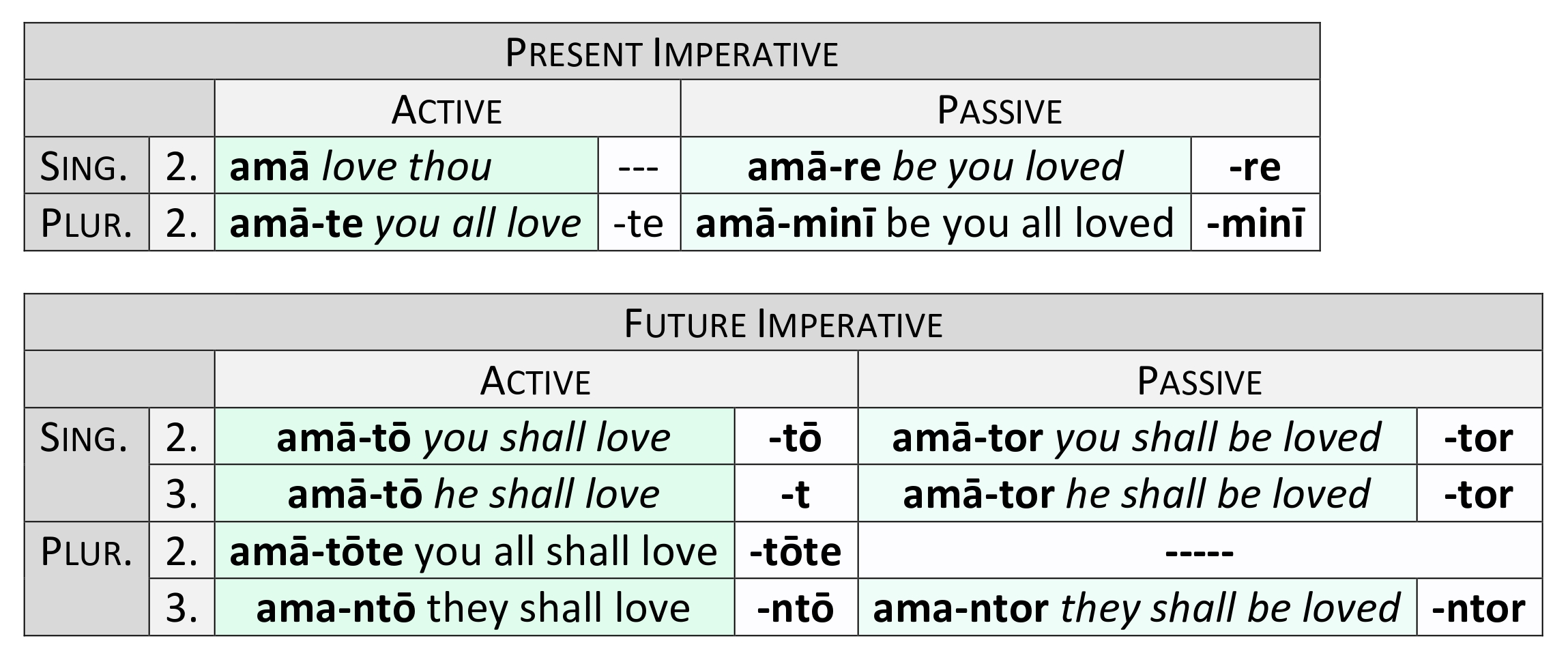CONJUGATIONS
GERUND AND SUPINE
159. The Gerund and Supine are used as follows.
a. The Gerund is a verbal noun, corresponding in meaning to the English verbal noun in -ing (§ 502).
loquendī causā for the sake of speaking
Note— The Gerund is found only in the oblique cases. A corresponding nominative is supplied by the Infinitive.
Scrībere est ūtile. Writing (to write) is useful.
BUT
ars scrībendī the art of
writing
b. The Supine is a noun of the 4th declension (§ 94.b) in form, found only in the accusative ending in -tum, -sum, and the dative or ablative ending in -tū, -sū. The Supine in -um is used after verbs and the Supine in -ū after adjectives (§§ 509 - 510).
Vēnit spectātum. He came to see.
mīrābile dictū wonderful to tell
TENSES
160. The Tenses of the Indicative have, in general, the same meaning as the corresponding tenses in English.
a. Of continued action.
1. Present: Scrībō. I write. (I am writing, I do write.)
2. Imperfect: Scrībēbam. I wrote. (I was writing, I did write.)
3. Future: Scrībam. I shall
write.
b. Of completed action.
1. Perfect: Scrīpsī. I have written. (I wrote.)
2. Pluperfect: Scrīpseram. I had
written.
3. Future Perfect: Scrīpserō. I shall have written.
161. The Perfect Indicative has two separate uses—the Perfect Definite and the Perfect Historical (or Indefinite).
- The Perfect Definite represents the action of the verb as completed in present time, and corresponds to the English perfect with have.
Scrīpsī. I have written.
- The Perfect Historical narratesa simple act or state in past time without representing it as in progress or continuing. It corresponds to the English past or preterite and the
Greek aorist.
Scrīpsit. He wrote
162. The Tenses of the Subjunctive are chiefly used in dependent clauses, following the rule for the Sequence of Tenses; but have also special idiomatic uses (see Syntax). For the use of Tenses in the Imperative, see §§ 448 - 449.
PERSONAL ENDINGS
163. Verbs have regular terminations1 for each of the three Persons, both singular and plural, active and passive.2
a. The Perfect Indicative active has special terminations.3
b. The Imperative has the following terminations.
Footnotes
2. The Passive is an old Middle Voice, peculiar to the Italic and Celtic languages, and of uncertain origin.
3. Of these terminations -ī is not a personal ending, but appears to represent an Indo-European tense-sign -ai of the Perfect Middle. In -is-tī and -is-tis, -tī and -tis are personal endings; for -is-, see § 169.c. Note. In -i-t and -i-mus, -t and -mus are personal endings, and i is of uncertain origin. Both -ērunt and -ēre are also of doubtful origin, but the former contains the personal ending -nt.
STEMS
164. The forms of the verb may be divided among three stems, called (1) the Present, (2) the Perfect, and (3) the Supine stem.
1. On the Present stem are formed:
The Present, Imperfect, and Future Indicative, Active and Passive.
The Present and Imperfect Subjunctive, Active and Passive.
The Imperative, Active and Passive.
The Present Infinitive, Active and
Passive.
The Present Participle, the Gerundive, and the Gerund.
2. On the Perfect stem are formed:
The Perfect, Pluperfect, and Future Perfect Indicative Active.
The Perfect and Pluperfect Subjunctive Active.
The Perfect Infinitive Active.
3. On the Supine stem are formed:1
a. The Perfect Passive Participle, which combines with the forms of the verb sum (be) to make—
The Perfect, Pluperfect, and Future Perfect Indicative Passive.
The Perfect and Pluperfect Subjunctive Passive.
The Perfect Infinitive Passive.
b.The Future Active Participle, which combines with esse to make the Future Active Infinitive.
c. The Supine in -um and -ū. The Supine in -um combines with īrī to make the Future Passive Infinitive (§ 203.a).
Note— The Perfect Participle with fore also makes a Future Passive Infinitive (as, amātus fore). For fore (futūrum esse) ut with the subjunctive, see § 569.3.a.
Footnotes
-tūra, etc., see § 238.b, Note 1), were felt by the Romans as belonging to one system, and are conveniently associated with the Supine Stem. Thus, from pingō, we have pictum, pictus, pictūrus, pictor, pictūra; from rīdeō, rīsum (for † rīd-tum), rīsus (participle), rīsus (noun), rīsūrus, rīsiō, rīsor, rīsibilis.


